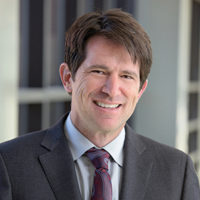Asleep deep brain stimulation (DBS) is an advancement in DBS that allows the procedure to be performed while the patient is asleep. This advancement has been offered for three years by leading neurosurgeons, including the Denver DBS Center, Barrow Neurological Institute, and Oregon Health & Science University.
DBS has proved so effective over the past 30 years at controlling the symptoms of Parkinson’s disease that any change in the procedure needs to be carefully scrutinized. Two authoritative studies now show that asleep DBS is as effective as traditional deep brain stimulation that requires the patient to be awake during the brain surgery.
Kim Burchiel, MD, and associates at Oregon Health & Science University studied the outcomes of 60 DBS patients over 18 months, finding that asleep DBS was as effective as traditional awake DBS. Likewise, a 2012 study by AM Harries and associates at the University Hospital Birmingham (England) concluded:
Long-term outcomes confirm that it is both safe and effective to perform STN DBS under general anesthesia. As part of patient choice, this option should be offered to all DBS candidates with advanced Parkinson disease to enable more of these patients to undergo this beneficial surgery.
In 2019, our team at the Denver DBS Center published a study in the Annals of Biomedical Engineering that showed robot assisted asleep deep brain stimulation using MRI scans taken before surgery with CT scans during surgery resulted in 25% improvement in electrode placement and shorter surgical times versus traditional DBS.
What is the difference?
Deep brain stimulation is a surgery that implants tiny wires, called electrodes or leads, into target areas of the brain that control movement and cause tremors and rigidity. A tiny electrical impulse that is generated by a battery placed under the skin near the collarbone disrupts these signals, which helps prevent tremors and rigidity.
Traditionally, DBS has been performed by implanting the leads into the brain based on an MRI or CT that was taken prior to surgery. In the OR, the lead placement is tested using microelectrode recordings (MER) and patient feedback. Despite advancements in MER, this technique requires specialized equipment and training, longer time in the operating room. Most significantly, it requires the patient to be awake for the testing—a requirement that disqualifies some patients and detours many others from obtaining the surgery.
Also during Awake DBS, there is much more shifting of the brain due to air getting into the skull, leading to more difficulty in pinpointing the target. Additionally, a significant number of patients can have bending of the microelectrode of over 2 mm, leading the surgeon to a false confirmation of the target during Awake surgery. Due to these problems it is reported that 1-12% of patients may need re-operation to reposition their electrode with traditional surgery.
Asleep DBS, developed by Dr. Burchiel in 2011, uses imaging performed in the operating room during the surgery to replace the microelectrode recording testing. Advanced imaging (Denver DBS Center utilizes a portable high-powered CT scanner called a CereTom) provides the surgeon with direct visualization of the target centers. The CT scans are taken in the operating room while the patient is asleep and fused with high nuclear resolution MR images obtained prior to surgery. Using the fused images, the surgeon makes a precise placement of the electrodes then confirms placement with a second set of images taken in the OR and adjustments are made right then if needed.
Unlike traditional DBS, neurosurgeons—including myself—no longer have to rely on imprecise patient responses and audio frequency changes to locate the ideal target. Instead, we can use actual pictures to show us exactly where to place the lead for optimal outcomes. And at the same time, patients can remain asleep—an appealing concept for most people facing brain surgery!
Burchiel’s recent study based on the outcomes of 60 patients concluded: Placement of DBS electrodes using an intraoperative CT scanner and the NexFrame achieves an accuracy that is at least comparable to other methods.
Recently, I became the first neurosurgeon to perform Asleep DBS using the Mazor Robotics Renaissance® Guidance System at Littleton Adventist Hospital in Denver. Using this system, we have the opportunity to achieve accuracy rates that are likely to exceed Burhiel’s results.
With results that are at least equal to awake DBS, many of my colleagues and I find several benefits to offering Asleep DBS:
- Patients can remain asleep, enabling more patients to access DBS
- Patients do not have to stop taking their medication (which is mandatory for traditional DBS)
- Patients are likely to experience more accurate lead placement
At the Denver DBS Center, we offer patients with Parkinson’s disease either traditional DBS or Asleep DBS. Currently, most patients are choosing the new Asleep DBS surgery and showing excellent outcomes.
Read more about improvements in DBS in this blog post: Newer DBS Techniques Allow For More Accurate Electrode Placement
This article was updated in March 2022.



